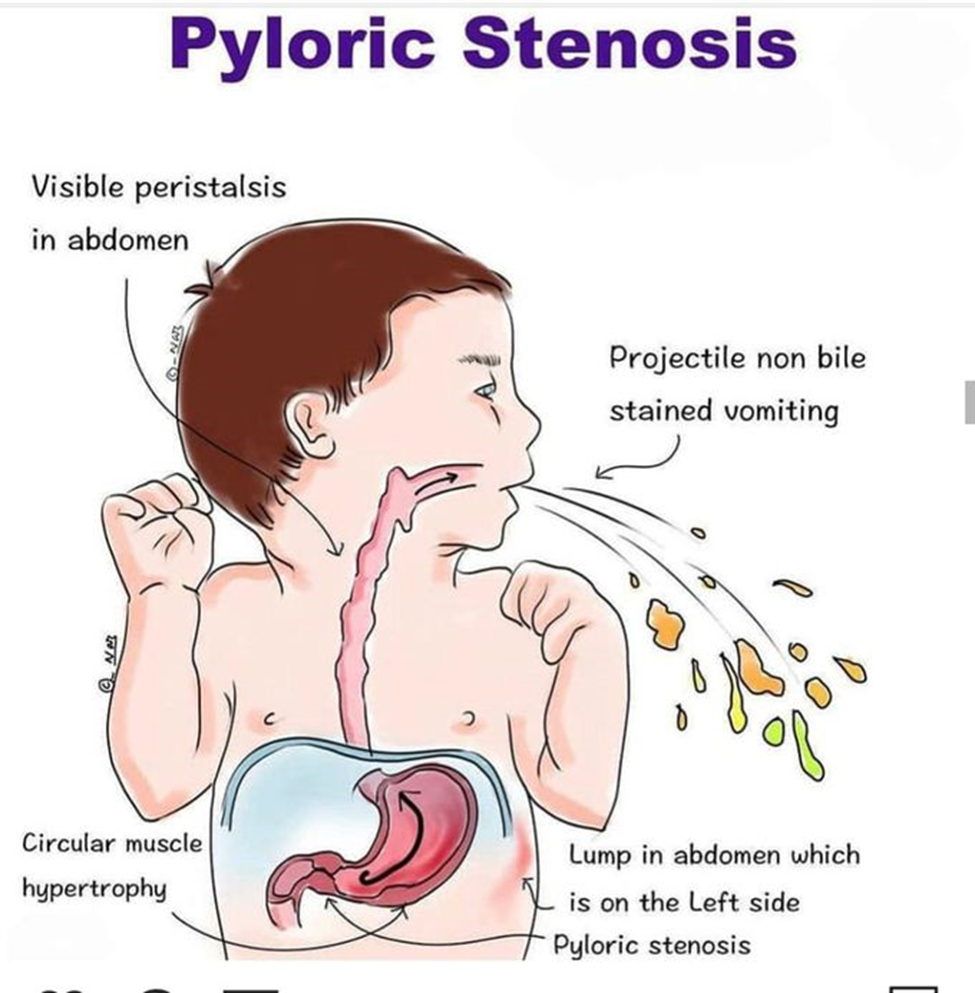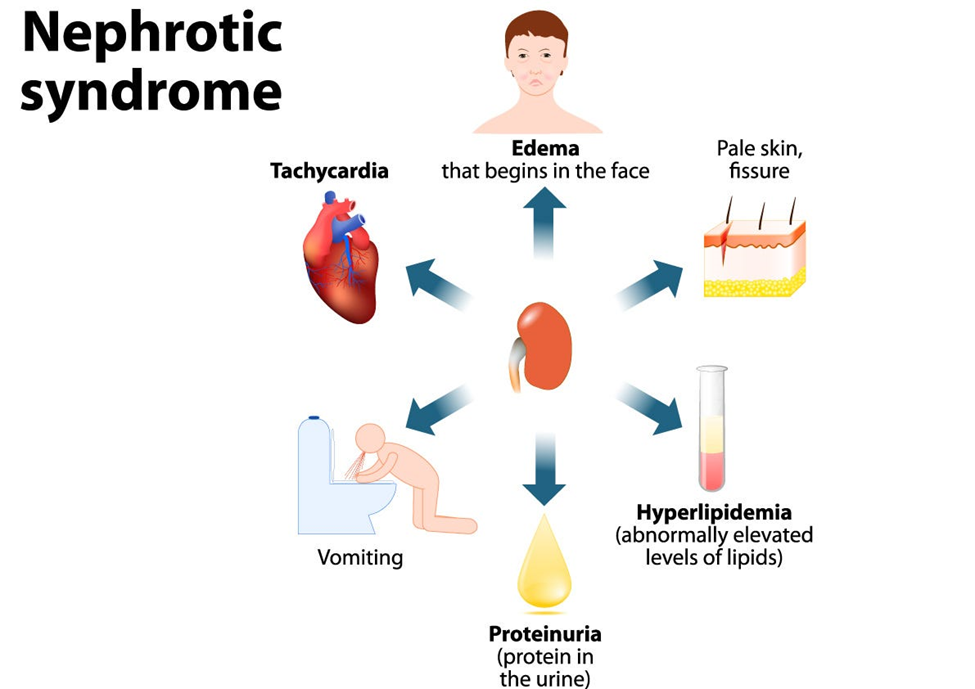A nurse is caring for a 6-week-old infant admitted to the pediatric unit for evaluation of a suspected pyloric stenosis. Which of the following findings should the nurse expect?
Projectile vomiting
Metabolic acidosis
Effortless regurgitation
Distended abdomen
The Correct Answer is A
A. Projectile vomiting
Projectile vomiting is a classic symptom of pyloric stenosis in infants. It typically occurs within 30 minutes of feeding and is forceful, often projecting several feet away from the infant. This occurs due to the obstruction at the pyloric sphincter, leading to the stomach forcefully emptying its contents.
B. Metabolic acidosis
Metabolic acidosis is not a typical finding associated with pyloric stenosis. Pyloric stenosis leads to vomiting, which can result in dehydration and electrolyte imbalances, but it typically does not cause metabolic acidosis directly.
C. Effortless regurgitation
Effortless regurgitation is not a characteristic finding of pyloric stenosis. In pyloric stenosis, vomiting is forceful and projectile, rather than a passive regurgitation of stomach contents.
D. Distended abdomen
A distended abdomen can be a finding in pyloric stenosis. The obstruction at the pyloric sphincter can lead to gastric retention, causing the stomach to become distended over time. However, it's important to note that not all infants with pyloric stenosis will present with a visibly distended abdomen.

Nursing Test Bank
Naxlex Comprehensive Predictor Exams
Related Questions
Correct Answer is C
Explanation
A. Orange-tinged urine
- This manifestation is not typically associated with nephrotic syndrome. Orange-tinged urine may indicate other conditions such as dehydration, liver disease, or the presence of certain medications or foods.
B. Hypertension
- Hypertension is not a common manifestation of nephrotic syndrome. However, it can occur in some cases due to the retention of sodium and water, which can lead to fluid overload and increased blood pressure.
C. Periorbital edema
- This is a classic manifestation of nephrotic syndrome. Periorbital edema, or swelling around the eyes, is often one of the initial signs observed in children with nephrotic syndrome due to the loss of protein in the urine, leading to fluid accumulation in the tissues.
D. Polyuria
- Polyuria, or increased urine output, is not typically associated with nephrotic syndrome. Instead, children with nephrotic syndrome may experience oliguria or normal urine output, depending on the severity of renal involvement and fluid balance.

Correct Answer is A
Explanation
A. Firmly attached white particles on the hair:
Firmly attached white particles on the hair are characteristic of nits, which are the eggs of lice. While this finding supports the diagnosis of pediculosis capitis, it is not a definitive indication on its own.
B. Itching and scratching of the head:
Itching and scratching of the head are common symptoms of pediculosis capitis. However, they are also common symptoms of various other scalp conditions, so they are not definitive indications.
C. Thick, yellow-crusted lesions on a red base:
This description is more characteristic of impetigo, a bacterial skin infection, rather than pediculosis capitis. Impetigo typically presents with yellow-crusted lesions on a red base, but it does not involve lice infestation.
D. Patchy areas of hair loss:
Patchy areas of hair loss are not typically associated with pediculosis capitis. This finding is more suggestive of conditions like alopecia areata or fungal infections.
Whether you are a student looking to ace your exams or a practicing nurse seeking to enhance your expertise , our nursing education contents will empower you with the confidence and competence to make a difference in the lives of patients and become a respected leader in the healthcare field.
Visit Naxlex, invest in your future and unlock endless possibilities with our unparalleled nursing education contents today
Report Wrong Answer on the Current Question
Do you disagree with the answer? If yes, what is your expected answer? Explain.
Kindly be descriptive with the issue you are facing.
